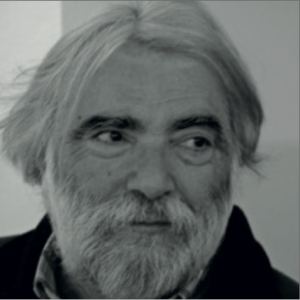The artist’s work is vast. Its assignment to a specific pictorial trend poses insurmountable difficulties although it is possible to note some selective affinities (especially thematic and technical) with movements that have helped shape his artistic personality.
note some selective affinities (especially thematic and technical) with movements that have helped shape his artistic personality.
Painter Plastic trend has been moving away gradually from academic realist style at the same time he were inquiring intocertain modern manifestations, which was more appropriate to express his inner world, so that their paintings have become extensions of his mysterious brain.
The formative years in Lucena will leave a deep mark in his artwork: the surrounding neighborhood sitting on the doorsteps, flowers in their pots, domestic animals or poultry, streets, funerals, children,…
Its development as a painter is associated with all vanguards that have the man as an argument and, especially, to the world of expressionism, present in many of his compositions; Fauvism, which receives the compulsive color; and Surrealism, confusing the real with the imagined.
There are still pictures that remind compositions of Cézanne, lashes with intense color that evoke the bright colors of Gauguin in his nativeof the South Seas and especially Van Gogh, for who Rafael feels authentic pictorial passion. The distortion, strength, plasticity, that vivid look of the characters who seem to observe from beyond time and space, suggests similar effects as the one of the Dutch master genius. Next to it, its delicate touches of poetry, robust forms and ethereal forms are related to teh knowledge of Rousseau or the mystic Chagall.
Among the Spanish painters of the XX century, he has connections with Zuloaga and Sorolla and his resplendent light; Evaristo Valle and Gutiérrez Solana, whose paintings of black Spain gravitates on several of his compositions; Vazquez Diaz for his relationship with art education and learning oil techniques and especially for his figurative style, with influences from Cézanne, brought to Spain after the war; with Remedios Varo dreamalike work who has connotations that may have connections with Rafael; with Antoni Clave, related to the work of our author’s use of iconography similarities especially in its early days; and Ismael Gonzalez de la Serna in terms of thematic and technical influences.
Colour is the basic element in the artist’s painting, giving more importance to the study and analysis of the colours by nature, highlighting the floral and sensations that are observed through the volumes and masses of colour. There is a process of abstraction from the immediate reality (the colours in the case of Rafael) to perhaps less concrete elements, nature, man, social environment.
His creation is not exceptionally new in terms of the subject because he paints objects, people, and environments that have been painted by other artists, in other places, but Rafael shuns the conventional way of making a painting trying to get inside the characters, the things and capture their true value, their experiences; He is not as interested in an accurate reflection of the external appearance, but the situation in which they find (joy, sadness or loneliness).
Rafael has expanded the small aesthetic universe of Andalusia and Spain linking it with international artistic trends emphasizing once again that authentic Andalusian trait that tends toward the universal without limitations, while maintaining the essence of his character, his idiosyncrasies, without forgetting its deep roots that emerge in their diverse artistic expressions.
